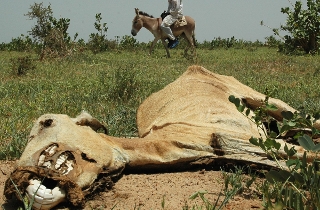 [By Caroline Zickgraf, Sara Vigil, Florence de Longueville, Pierre Ozer and François Gemenne on Knomad.org] From the Sahel to the coast, West Africa is experiencing a variety of environmental change impacts, whether resulting from slowonset changes or sudden shocks.
[By Caroline Zickgraf, Sara Vigil, Florence de Longueville, Pierre Ozer and François Gemenne on Knomad.org] From the Sahel to the coast, West Africa is experiencing a variety of environmental change impacts, whether resulting from slowonset changes or sudden shocks.
They are significantly influencing migration patterns in and out of West Africa. In this region where natural resources form the foundation of livelihoods and food security (fishing and agriculture), the relationship between environmental changes and socioeconomic vulnerabilities is of particular concern.
Environmental degradation affects populations’ vulnerability and resilience capacity in complex ways. The presence of multiple environmental trends and shocks varies geographically. While desertification and droughts are of prime importance for some, floods, coastal erosion, and sea level rise are the main hazards for others. Even within local populations affected by the same climatic threats, their vulnerability and likelihood to migrate are affected by their socioeconomic status, their dependence on natural resources, and their demographic characteristics. Given the differentiated vulnerabilities and capacities for resilience, policy must be adapted and implemented according to particular populations and needs.
Policy makers must also consider vulnerability as it is perceived by those affected. Therefore,environmental mobility cannot be treated as a strictly rational behaviour based on actual vulnerability.
Local populations must be educated about current and expected changes to their natural environments to facilitate better-informed mobility decisions. Migration can also offer a significant tool with which local populations can increase their resilience to socio-environmental changes.
Building infrastructure and establishing protection mechanisms for migrants and displaced persons is a necessary step in mitigating future risk.
Regional authorities must work together to build the resilience of sending communities to climatic shocks, but they must also facilitate migration as an adaptation strategy by recognizing the development potential of remittances. These policy interventions may help decrease the potential for the creation of “trapped” populations, be they trapped in areas of origin, in transit, or in destination areas.
To read the article, click here.
Posted on Knomad.org on April 2016
